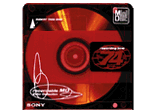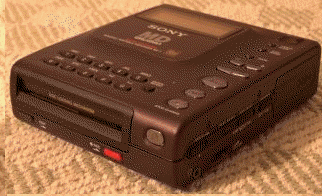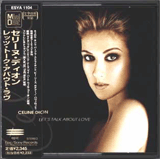|
|
|
 ........................... ........................... |
Seeing that the audio world was missing something, Sony created the minidisc in 1992. It was a disc in a square casing of approximately 7cm x 6.5cm x .3cm. An audio format that could be digitally recorded like tapes but sound just as good as CD's, and at the same time be so small and still be editable, the minidisc was the perfect solution. Since it's digital, you could skip to tracks easily like a CD. It would be perfect for the general public - now you could make your own mixes recording off of possibly anything you could imagine, and with it being so portable and shock-resistant, you could take it anywhere! It was not intended to replace CD's but to replace the tape player. Since that good year, minidisc has had its ups and downs.
|
{ |
|
| This is the first minidisc player/recorder ever made, released in 1992. | ......................and the first player, also released in 1992. |
 |
The first minidisc campaign was to advertise pre-recorded discs, like CD's, but that failed because with un-targeted advertising and the sound quality not perfected when recording generations after generations, the public viewed it as a rip-off. These are some examples that have failed. |
|
| Since 1992, minidisc has made many strides to get the quality better, size and weight smaller, and make it more friendly to the consumer's need. One basic recorder/player can be bought for under $200, and one disc has now 80 minutes recording time, at most 4 dollars a disc at your nearest 7-11. The first player, the mz-1 weighed 700 grams, and was almost as big as 700 cubic centimeters. Now a player is as light as 86 grams and is small as 70 cubic centimeters, and there are many more features. |
| Today, there are home decks, hi-fi systems, boom-boxes, car components, or the portable models of minidisc. It can record over a million times without diminishing the sound quality, and is even used professionally, like at radio stations. It's editable, meaning that you could name, move, and erase tracks. |
|
|
    |
Minidisc can record off of anything - including CD's, tapes, microphone, radio, etc. But most importantly to me,mp3s, the hot new compressed music format on the internet, can be recorded onto the minidisc. Almost all portable units come with a backlit remote, and have features like mega bass, multiple playback options, and 40 second shock protection. The battery life can last up to 40 hours on a player/recorder, or up to 77 hours on a playback only. |
| While a huge hit in Japan, it failed terribly in the USA. This was caused by many reasons. The reason minidisc isn't popular in America is probably because it's still considered high-tech, due to the earlier failures, and therefore fragile and expensive, although it would be cheaper than prices the public would estimate. Also, the majority of the American population have probably not even heard of minidisc and it's versatility to record from any source. |
| Minidisc survives in Europe, but is a huge hit in Japan and other Eastern Asian countries. It's stylish, sophisticated-looking, and very convenient. People in that area are more familiar with the mindisc and "high-tech" equipemnt, so it doesn't seem as fragile. In many parts of Asia, almost all teenagers own if not many, at least one unit. It's probably the equivalent of the compact disc in America, when you consider popularity. |
| h |
| ............................................. | ............................................ |